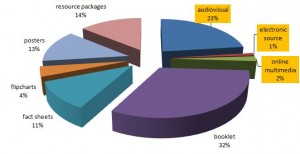Weblog 3.1
The conclusion of module three stated “…..how indigenous principles could be applied in mainstream and dominant educational settings to produce a more progressive and sustainable future for schools and communities. Indigenous education is not simply for Indigenous peoples.”
I found an Australian article arguing just this – that the Indigenous way of teaching can be a deep learning for all learners.
Tyson Yunkaporta, an Aboriginal Education Consultant, undertook a research project Aboriginal Pedagogies at the Cultural Interface that asked two questions:
1. How can teachers engage with Aboriginal knowledge?
Similar to aspects of Indigenous learning outlined by Marker (2011) and Barhardt and Kawagley (2005), Yunkaporta has developed an 8ways Aboriginal Pedagogical Framework comprising story telling, learning maps, non-verbal, symbols and images, land links, non-linear, deconstruct/reconstruct and community links, which all interact in multiple ways. You can view the diagramatic representation of the framework on the site.
He argues, in the Draft Report that there is a common-ground phenomenon when higher order knowledge from Indigenous systems is brought alongside similar western systems. p20 of the report has this diagrammatically as a ‘Boomerang Matrix of Cultural Interface Knowledge’.
Yunkaporta states that “non-Aboriginality (is) not found to be a barrier to engaging with Aboriginal knowledge. …… Aboriginality in itself does not provide some kind of magic ticket for engaging with Aboriginal knowledge. Any person, regardless of their background, must have a sophisticated awareness of their own identity and must be engaging in local knowledge protocols in order to come to Aboriginal knowledge with integrity.” p27
2. How can teachers use Aboriginal knowledge authentically and productively in schools?
Yunkaporta’s solution lies in the application of Aboriginal processes rather than Indigenised content (which he outlines in depth in the second half of his report).
References
Barnhardt, R., & Kawagley, A. O., “Indigenous Knowledge Sytems and Alaskan Native ways of Knowing” Anthropology and Education Quarterly, 36(1), 2005, 8-23.
Marker M. Teaching History form an Indigenous perspective. Four winding paths up the mountain.
Yunkaporta, T. (2009) Aboriginal Pedagogies at the Cultural Interface draft report
